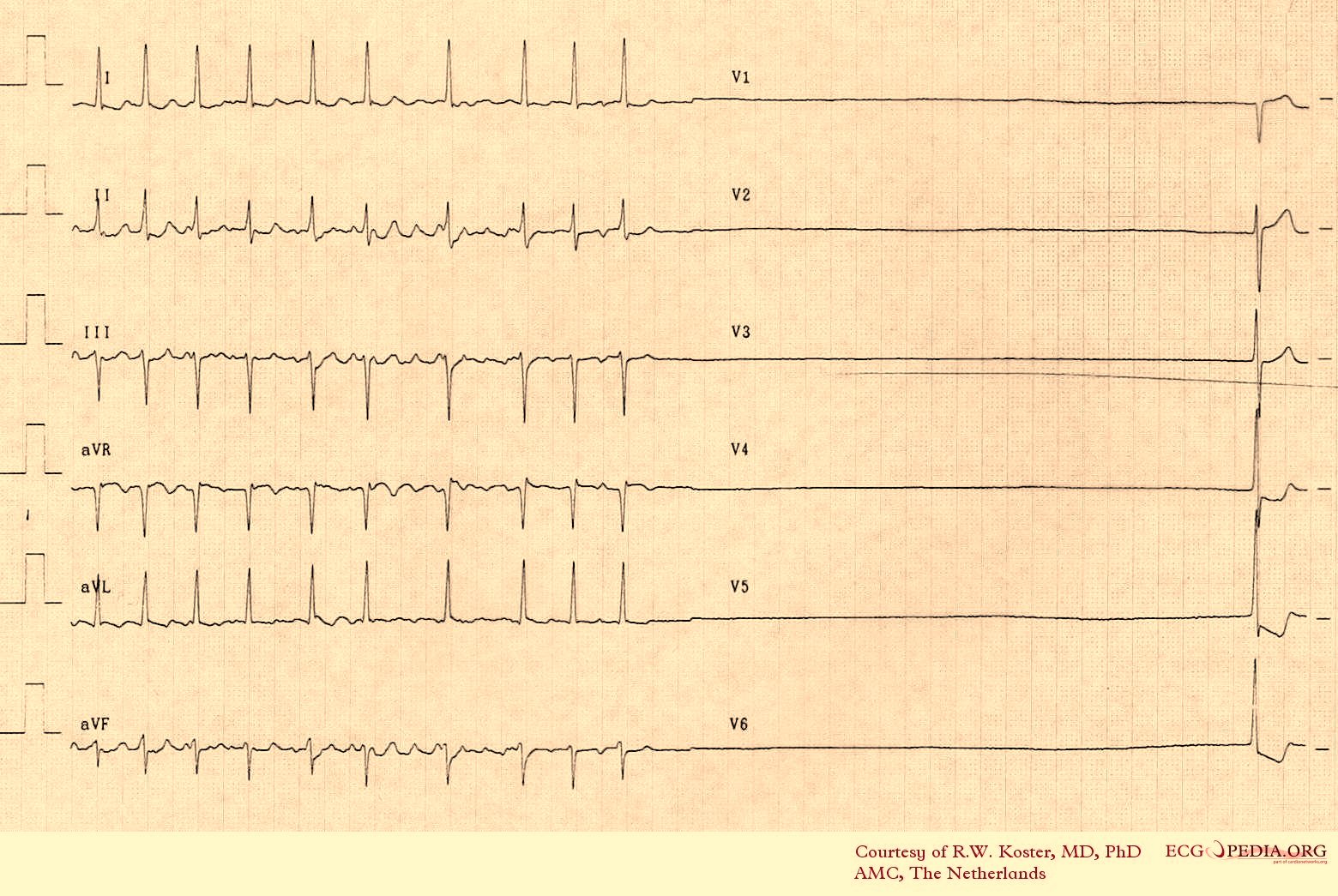Sick sinus syndrome: Difference between revisions
| Line 17: | Line 17: | ||
{{SK}} Bradycardia-tachycardia syndrome, tachycardia-bradycardia syndrome, tachy-brady syndrome, sinus node dysfunction, SND, SSS. [[Sinus arrest]], [[sinus bradycardia]], are forms or variants of sick sinus syndrome. | {{SK}} Bradycardia-tachycardia syndrome, tachycardia-bradycardia syndrome, tachy-brady syndrome, sinus node dysfunction, SND, SSS. [[Sinus arrest]], [[sinus bradycardia]], are forms or variants of sick sinus syndrome. | ||
==Treatment== | ==Treatment== | ||
Revision as of 03:56, 28 August 2012
| Sick sinus syndrome | |
 | |
|---|---|
| Sick sinus syndrome | |
| ICD-10 | I49.5 |
| ICD-9 | 427.81 |
| OMIM | 163800 |
| DiseasesDB | 12066 |
|
Sick sinus syndrome Microchapters |
|
Diagnosis |
|---|
|
Treatment |
|
Case Studies |
|
Sick sinus syndrome On the Web |
|
American Roentgen Ray Society Images of Sick sinus syndrome |
Editor-In-Chief: C. Michael Gibson, M.S., M.D. [1]
Synonyms and keywords: Bradycardia-tachycardia syndrome, tachycardia-bradycardia syndrome, tachy-brady syndrome, sinus node dysfunction, SND, SSS. Sinus arrest, sinus bradycardia, are forms or variants of sick sinus syndrome.
Treatment
Bradyarrhythmias are well controlled with pacemakers, while tachyarrhythmias respond well to medical therapy. However, because both bradyarrhythmias and tachyarrhythmias may be present, drugs to control tachyarrhythmia may exacerbate bradyarrhythmia. Therefore, a pacemaker is implanted before drug therapy is begun for the tachyarrhythmia.
ACC / AHA Guidelines- Recommendations for Permanent Pacing in Sinus Node Dysfunction (DO NOT EDIT) [1]
| “ |
Class I1. Permanent pacemaker implantation is indicated for SND with documented symptomatic bradycardia, including frequent sinus pauses that produce symptoms. (Level of Evidence: C) 2. Permanent pacemaker implantation is indicated for symptomatic chronotropic incompetence. (Level of Evidence: C) 3. Permanent pacemaker implantation is indicated for symptomatic sinus bradycardia that results from required drug therapy for medical conditions. (Level of Evidence: C) Class IIa1. Permanent pacemaker implantation is reasonable for SND with heart rate less than 40 bpm when a clear association between significant symptoms consistent with bradycardia and the actual presence of bradycardia has not been documented. (Level of Evidence: C) 2. Permanent pacemaker implantation is reasonable for syncope of unexplained origin when clinically significant abnormalities of sinus node function are discovered or provoked in electrophysiological studies. (Level of Evidence: C) Class IIb1. Permanent pacemaker implantation may be considered in minimally symptomatic patients with chronic heart rate less than 40 bpm while awake. (Level of Evidence: C) Class III1. Permanent pacemaker implantation is not indicated for SND in asymptomatic patients. (Level of Evidence: C) 2. Permanent pacemaker implantation is not indicated for SND in patients for whom the symptoms suggestive of bradycardia have been clearly documented to occur in the absence of bradycardia. (Level of Evidence: C) 3. Permanent pacemaker implantation is not indicated for SND with symptomatic bradycardia due to nonessential drug therapy. (Level of Evidence: C) |
” |
External links
References
- Adan V, Crown LA (2003). "Diagnosis and treatment of sick sinus syndrome". Am Fam Physician. 67 (8): 1725–32. PMID 12725451.
- ↑ Epstein AE, DiMarco JP, Ellenbogen KA, Estes NAM III, Freedman RA, Gettes LS, Gillinov AM, Gregoratos G, Hammill SC, Hayes DL, Hlatky MA, Newby LK, Page RL, Schoenfeld MH, Silka MJ, Stevenson LW, Sweeney MO. ACC/AHA/HRS 2008 guidelines for device-based therapy of cardiac rhythm abnormalities: executive summary: a report of the American College of Cardiology/American Heart Association Task Force on Practice Guidelines (Writing Committee to Revise the ACC/AHA/NASPE 2002 Guideline Update for Implantation of Cardiac Pacemakers and Antiarrhythmia Devices). Circulation. 2008; 117: 2820–2840. PMID 18483207